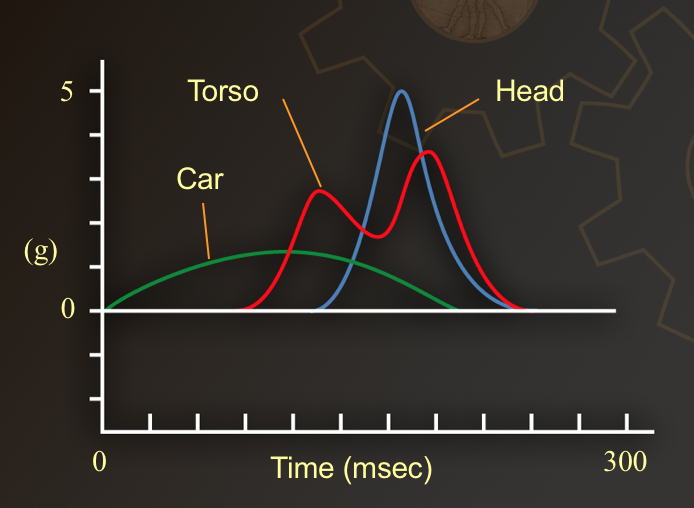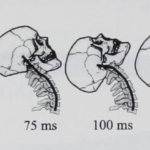Why soft tissues get injured in car crashes.
Why do soft tissues get damaged in low speed or no damage car crashes.?
Have you ever wondered why certain tissues get injured in crashes even when the crash happens a low speed and there is minimal or no damage to the vehicle? Now this is a multifactorial answers but what I’m going to discuss something that many professionals do not understand about the tissues that are frequently damaged in whiplash traumas.
Before we dive to far into the subject we need to clarify a couple of therms: Stress and Strain. Stress defined as is defined as a force per nit area, such as Pascals or pounds per square inch (psi). Strain is a measurement of of deformation and is expressed as a percentage or as an angle in degrees. Stress causes strain. (1)
Strain Characteristics of Ligaments
Central to our understanding of the tissues frequently injured in motor vehicle collisions is the understanding elasticity, plasticity and viscoelasticity. Most tissues are initially elastic. When you stretch a tissue in the elastic phase it will return to its normal form when the stretching force is released. This is like stretching a rubber band and seeing return to it’s initial form once the stretch is released. Most tissues have an initial elastic phase.
When a material is loaded beyond its elastic limit, not all the the change in the tissue will return to normal, this permanent change is called plastic deformation. In the case of human ligaments, some fibers within the ligament are damaged, while most remain intact. The result can be a permanent elongation and an alteration of it’s behavior. This is called a subcatastrophic failure or simply subfailure injury. Clinically this shows as ligament instabilities or ligament laxities when the joints now move beyond their normal range of motion as the ligament that hold them together are permanently deformed or elongated.
Viscoelasticity: where the rubber meets the road.
This part is the most important section in understanding how ligaments get damaged in car crashes. When thinking about a rubber band it does not matter how fast or slow you stretch the rubber band, the elastic behavior does not change. Visceolastic material on the other hand are influenced by how fast the rate or strain or fast the tissue is elongated.
Speed of car crashes
Most of the injures in car crashes happen in fractions of a second. 
This pictures shows how injuries in a car crash happen over 100-250 msec or .1-.2 seconds. Because these changes in the tissues happen over such a short period of time it changes how the ligaments adapt to the change. Because ligaments are viscoelastic, when they are stretched very rapidly they rip or tear. Many times the joints will not even exceed normal range of motion but because the tissues do not elongate like in a normal elastic phase, they rip or tear.

Simply put, ligaments get damaged in car crashes because the injuries happen very rapidly and this tissues rip or tear when stress (force) is applied to them over such a short period of time.
To make this easier to understand watch the attached video.
If you have been in a car crash and would like a consultation or evaluation to see if you have an injury call 970-207-4463
